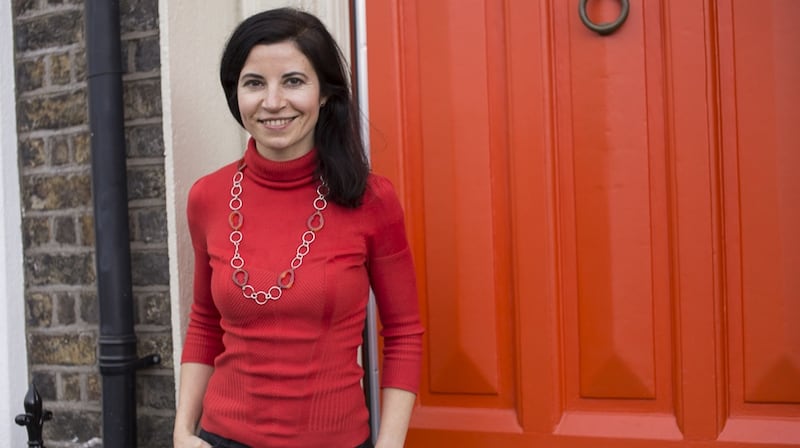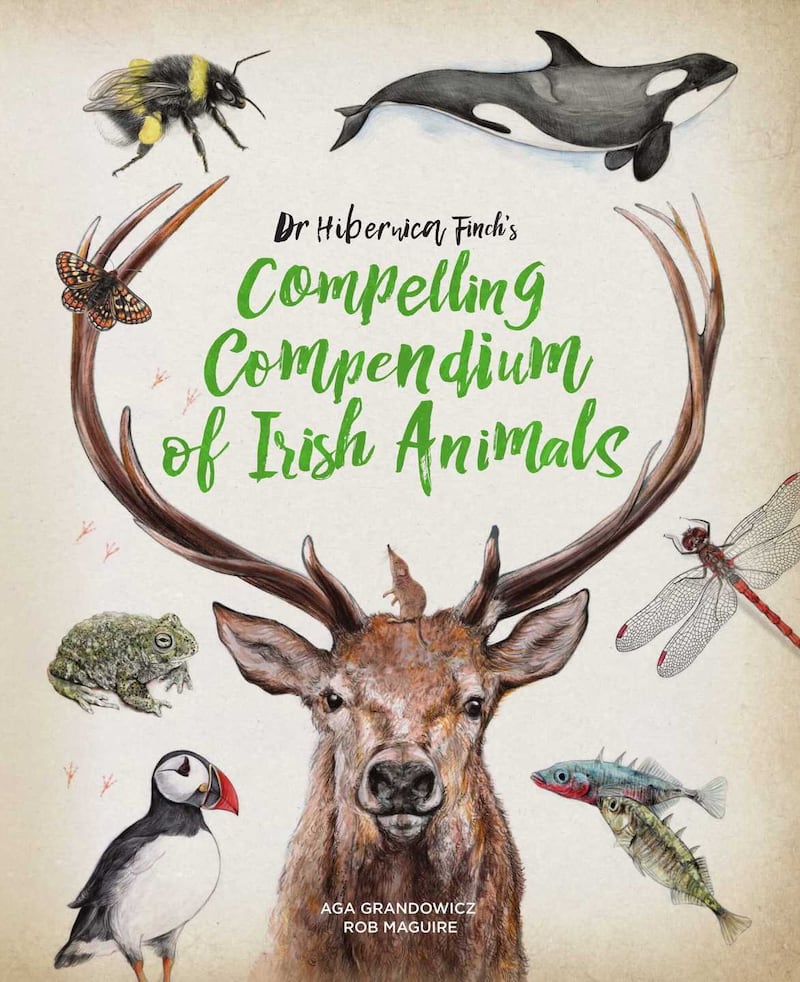Buzzing.
At first I’d thought there was a problem with my phone.
“Dr Finch, are you in the apiary?”
More buzzing.
“I’m calling to speak to you about the book.”
I raise my voice above the din: “It’s for The Irish Times.”
Through the omnipresent mumble of insects, I make out Ireland’s most eminent zoologist utter the phrase “Magnificent honey capping…” and the line went dead.
This was the end of conversation one.
*
Who hasn’t heard of Hibernica Finch? If you grew up in Ireland, it’ll have been hard to avoid her. Books, TV shows, even an acclaimed Hollywood movie (produced using a nom de plume, of course), the good doctor has most certainly gotten around. I’m not sure where it was that I first came across her work, but it was likelyby way of her acclaimed 1975 bestseller Digging Without A Spade, or possibly her beloved early ’80s TV series, She Sees Sea, She Saw Sea (or simply “the sea show”, as we kids called it). A genius not short of eccentricities, Dr Hibernica Finch opened the eyes of successive Irish generations to the wonders of the natural world. Yet the woman herself remained something of a mystery.
A notoriously private person, Dr Finch has eschewed the spotlight despite remaining firmly in the public eye for more than half a century. For this reason, convincing Hibernica Finch to give the world a glimpse at the pages of her own personal notebooks was no easy task. Convincing her to speak about this new publication in the pages of a national newspaper proved to be even more difficult. I resolved to do it in person.

Tracking down a zoologist can be difficult. Particularly if one is, like myself, an indoors-y type. When Aga (Grandowicz, illustrator/designer extraordinaire) first suggested getting in touch with Dr Finch to discuss creating a book for young readers, I was concerned about where this journey might take me, but as it turned out, my bulk ordering of antihistamines was hasty: Hibernica Finch was in Dublin, conducting a study in the Phoenix Park. Taking this stroke of luck as fate, we hopped straight on the Luas and soon arrived in the company of a legend. We found her lying in the grass near the papal cross, not six feet from a herd of deer. The buck was staring at Dr Finch, so much so that I wondered if he recognised her. Finch, for her part, was slowly, carefully tap-tapping a pencil against paper. It was well documented that Hibernica Finch has kept journals for decades – notebooks in which she draws sketches and collects musings on various animals. These notebooks represent the Holy Grail of Irish wildlife, and we were witnessing one’s creation.
When approaching a zoologist in the wild, it is recommended that you maintain a good distance, so as not to startle them. I certainly didn’t want to interrupt Dr Finch’s work, but after waiting for her to look up for what seemed an eternity, I was starting to get funny looks from joggers. I cleared my throat.The deer scattered.
“Really!” the doctor exclaimed, scrambling to her feet. “I thought a fight was about to break out.” I hastily explained that I was merely trying to get her attention, and was not in any way looking for trouble, before Hibernica Finch looked me in the eye, said, “Not us – the deer,” then offered me an ice-cream.
“The bucks will lock horns to try to win over the doe,” she told me over an Iceberger. “It’s like a rugby scrum, but with just two players. They show off, too, prancing around in a parallel walk that’s almost a form of competitive posing.The sort of thing you’d see at a fashion show. It’s all about who’s the biggest, who’s the best, who’s going to win the heart of the fair maiden.”

She was fascinating to listen to. For the first 20 minutes or so I don’t think Aga or I uttered a word beyond an introduction. Then, when the final ice-cream was gone, we made our pitch.
“A children’s book?” Dr Finch betrayed nothing as she repeated our suggestion aloud, as if to taste it better. After a moment’s silence, I followed up: “It seems that now more than ever it’s vital that we teach younger generations about nature.”
Hibernica Finch seemed to agree with this. “Children need to know the world around them,” she said, and after a moment’s thought added, “We all do.” The zoologist began to pace up and down the cycle path, deep in thought. “I do admire the fact that young people have such voracious appetites for learning. Growing up tends to dull that urge. Adults find it altogether more favourable to reassure ourselves that we already know everything.” She stopped. “But no one wants to be lectured.”
She stared at us, as if demanding the correct response, before, to our relief, offering it herself. “It must be fun.” The pacing recommenced.”We need photographs, and lots of them. Bright, colourful, and of course, scientific. Images that will do these wonderful animals justice.Something suitably sumptuous. Consummately compelling.”
As Hibernica Finch grappled with this conundrum, my eyes fixed on the open pages of her notebook, and her sketch of a stag. It was drawn from the eye of someone who was not only familiar with Irish wildlife, but someone with a tremendous love for animals.Before I could stop Hibernica in her tracks, Aga spoke. “What about drawings?”
*
Having failed over the phone to draw her attention away from her beekeeping, I arrived at Hibernica’s house to chat about the book’s impending publication. The Compelling Compendium that we created is filled with information and illustrations drawn directly from the pages of Hibernica’s own hallowed notebooks. As publication neared, people were eager to hear Hibernica’s thoughts on the creation process. I’d left several messages to announce my arrival, even going to the length of sending her the details of my visit on a postcard (she’s a big fan of communicating by post), but when I arrived the doorbell yielded no results.
Reluctantly, I rang her mobile.
BeepBeepBeepBeep.BeepBeepBeepBeep.
Toads.
Somewhere lost amongst the music of the natterjacksI could just about make out the phrase “Incredible chattering…”
I hung up the phone, picked up the jar of honey that had been left for me on the doorstep, and walked away wondering what I'd tell the people at The Irish Times.
Dr Hibernica Finch's Compelling Compendium of Irish Animals, illustrated by Aga Grandowicz and written by Rob Maguire is published by Little Island Books, and is available from all good bookshops or at littleisland.ie





















